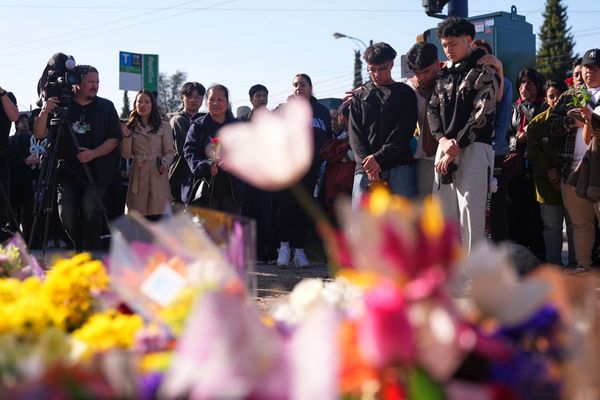With Pakistani peaks overlooking the polling booths in once-war-battered zones of Kargil, the fifth Ladakh Autonomous Hill Development Council-Kargil (LAHDC-K) elections witnessed a massive turnout of over 77.61% on Wednesday, in the first ever polls since Ladakh was carved out as a Union Territory in 2019.
An official said Kargil recorded 77.61% polling, which started at 8 a.m. and concluded by 4 p.m. It’s a quantum jump from around 70% polling recorded during the 2018 council elections.
Also read | BJP highlights post-2019 development to win votes in Kargil council polls
There are 85 candidates in the fray, with Congress fielding the highest 22 candidates followed by 17 candidates each by the NC and the BJP. The BJP is facing an uphill task against the NC-Congress combine. Around 24 candidates are contesting as independents.
Kargil has a population of 1.08 lakh and around 65,878 voters, with Shia Muslim population in the majority. Polling booths were abuzz with men and women since morning at Kargil’s Kaksar village, located at an altitude of 14,000 feet. Muzaffar Ali, 51, a voter in Kaksar, described the first-ever polls held under the Union Territory (UT) of Ladakh, carved out from J&K in 2019, as “significant and decisive”.
“The election gives a sense of representation. After becoming a UT, we have no MLAs and ministers as it used to in J&K. The council is our only hope,” Mr. Ali, a contractor by profession, said. Ladakh was carved out as a UT from J&K without an assembly in 2019.
During the 1999 war, Kaksar village saw dislocation of the entire local population, “because of incessant Pakistani shelling from the peaks nearby”, overlooking the highland plateau. “The ceasefire agreement between India and Pakistan has brought relief to locals. We welcome it,” Mr. Ali said.
Mr. Ali, however, is critical of the Centre’s move to separate Kargil from Kashmir in 2019, saying “it was not the right move”. “We believe Statehood and the provisions of Article 370 should be returned to us,” Mr. Ali added.
Bilqees Nasreen, 19, a student who is also a first-time voter from Kaksar village with over 600 votes, said she voted for “a strong hill council that upgrades the poor education sector by getting more professional colleges to Kargil”.
A majority of voters in Kargil district expressed resentment over the Centre’s decision to bifurcate J&K into two UTs. “I am an Indian. People of Drass helped the Army fight the Pakistan Army in 1999. But Drass sees its identity closer to Kashmir, where we have centuries-old links. Restoring Article 370 will help in protecting our identity,” Gayas-ud-Din, a shopkeeper at the world’s second coldest place Drass, said.
Also Read | Kargil migrant voters flood back as discontent is palpable
Unhappy with the developments post-2019, Mr. Din said the government providing free ration to the poor is not enough. “I have two sons with professional degrees but unemployed. Not enough employment was created after 2019. There is thrust only on upgrading road infrastructure, which is also meant for soldiers manning the region,” Mr. Din added.
In Hunderman village, overlooking the villages of Pakistan Occupied Gilgit-Baltistan, voters accused the government of being unmoved by the water crisis faced due to the dip in snowfall, apparently due to global warming.
“There were times when Hunderman would get four to five feet of snow in winters. However, we do not receive more than 1.5 feet of snowfall now. All water reservoirs feeding the village are drying up. We have no drinking water. There is a severe drought here this year. Our demand to have a lift water pump is not fulfilled. We are facing a grave crisis,” M. Ali, a farmer, said.
M.Ali’s mother Kulsoom, a resident of Gilgit-Baltistan, got married in 1971 when the war between India and Pakistan resulted in Hunderman becoming a part of India. “I am happy here. It’s that I miss my relatives. The Line of Control, at least for older people, should open so that the divided families could meet,” Ms. Kulsoom, in her late 70s, said, while pointing at the native village in Gilgit Baltistan, just two km away.
With resentment growing among the Muslim population against the BJP in Kargil, the Zanskar valley’s Buddhist population, where the BJP aims to win three seats, in the 26-member hill council, also sees a major split.
“The only way to protect Buddhist identity and culture is to cast a vote for the Leh Apex Body and the Kargil Democratic Alliance, which has seen the coming together of several political forces to protect our identity and culture. People can no more be fooled by the promise of district status to Zanskar,” Samanla Dorje, a Buddhist Congress leader, said.
In Kargil, even a BJP member, Fida Hussain, asked the party to rethink about Ladakh. “I am fed up with Congress’ and NC’s dynasty-driven politics. They failed the people of Ladakh on every front. UT status is fine but we should have the right to elect legislators and ministers and need Statehood status,” Mr. Hussain added.







